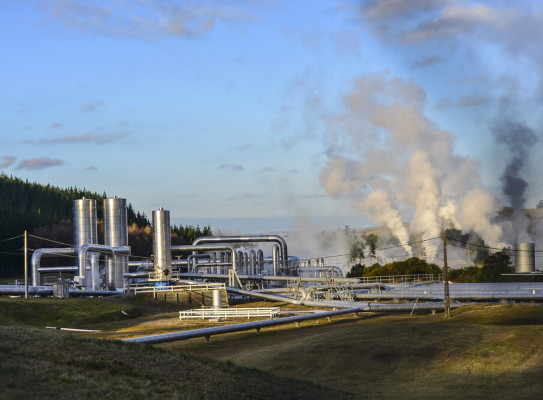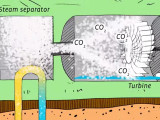
Geothermal: The Next Generation

Our research will find and characterise New Zealand’s supercritical resources in support of future exploration, drilling and technology development.
Overview
Geothermal: The Next Generation is an MBIE research programme led by Dr Isabelle Chambefort from GNS Science. To provide sustainable, low-carbon energy for future generations, exploration of the Earth’s energy must move towards hotter and deeper supercritical heat reserves (4 km to 10 km).
This programme aims to
- locate the best areas for exploration and map their potential
- train and inspire the ‘next generation' of scientific leaders in this field
- translate the science, making information clear and accessible
- fundamentally transform Aotearoa New Zealand’s energy sector by offering a more eco-friendly, decarbonised energy system
To achieve these objectives, we will
- draw on the learnings of supercritical heat exploration worldwide (e.g. Japan and Iceland)
- explore for the best location to encounter supercritical fluids in the crust
- define heat transfer systems from magma (molten underground rock) to surface
- model how to go beyond traditional geothermal systems and tap into deeper heat resources known as supercritical (fluid compressed beyond its critical pressure and temperature point) and characterise their unique properties
- provide a supercritical geothermal strategy for New Zealand
The project
Supercritical geothermal
We are working with international and New Zealand research and end-user collaborators to significantly increase the amount of energy produced from deeper and hotter geothermal resources in New Zealand. Scientists believe these resources could play a major role in the transformation of our energy sector.
Geothermal resources will be an important contributor to achieving the Government’s goal of net zero carbon emissions by 2050. This work will also open the way for investment opportunities and new employment, especially in industrial-scale use of energy.
Supported through MBIE’s Endeavour Fund, the project is aiming to find underground energy sources that are more than 100 degrees Celsius hotter than what is currently used in New Zealand (>400°C). One particular focus is the Taupō Volcanic Zone – the area between Lake Taupō and Whakatane – and the development and study of the distinct chemical characteristics of these underground environments.

Geothermal | Key to the Carbon Neutral Future
Geothermal is a critical source of renewable energy for New Zealand. The question is, can geothermal energy be carbon neutral? To answer this, GNS scientists are developing techniques that prevent carbon dioxide emissions from geothermal power plants.
Addressing geological, geochemical and technological challenges
At present, conventional geothermal wells are drilled to a maximum depth of about 3.5 km. However, by drilling beyond this, possibly to 6 km, scientists believe more energy will be available at the surface for the same amount of geothermal fluid extracted. The extreme physical and chemical conditions at deeper levels make it a challenging engineering operation.
The project aims to identify the best areas for exploratory drilling. It is also exploring the potential for re-injecting carbon dioxide produced as a result, to enable emissions-free ‘deep heat’ energy.
Laboratory simulations will be used to see how these very hot fluids react with rock, and how their use will affect deep reservoirs and neighbouring shallower reservoirs.
Alongside this work, our experts will evaluate how these deep resources might best be managed under legislative and planning frameworks. The project team is planning significant consultation and engagement with Māori, central and local government, and industry as the project develops. We are also communicating in general about geothermal to increase the awareness around this renewable energy source.
Deep or very hot geothermal initiatives are also underway in several other countries – notably Japan, Italy, Iceland, and the United States. However, so far no one has managed to successfully harness the very hot geothermal resources from these depths.
Deep geothermal generation will only go ahead in New Zealand when there is confidence that it can be done safely, sustainably, and economically. There is more information at: www.geothermalnextgeneration.com(external link)
-
Publications
For the publication list and links refer to: https://www.geothermalnextgeneration.com/knowledge

Research project details
Collaborators: University of Auckland, Victoria University of Wellington, the ETH-Zurich in Switzerland as well as planners from Traverse Environment Limited, Bridger Limited and Upflow.
Duration
2019–2024
Funding platform
GNG Programme
Status
Current
Programme Leader
Dr Isabelle Chambefort
Funder
Ministry of Business, Innovation & Employment (MBIE)